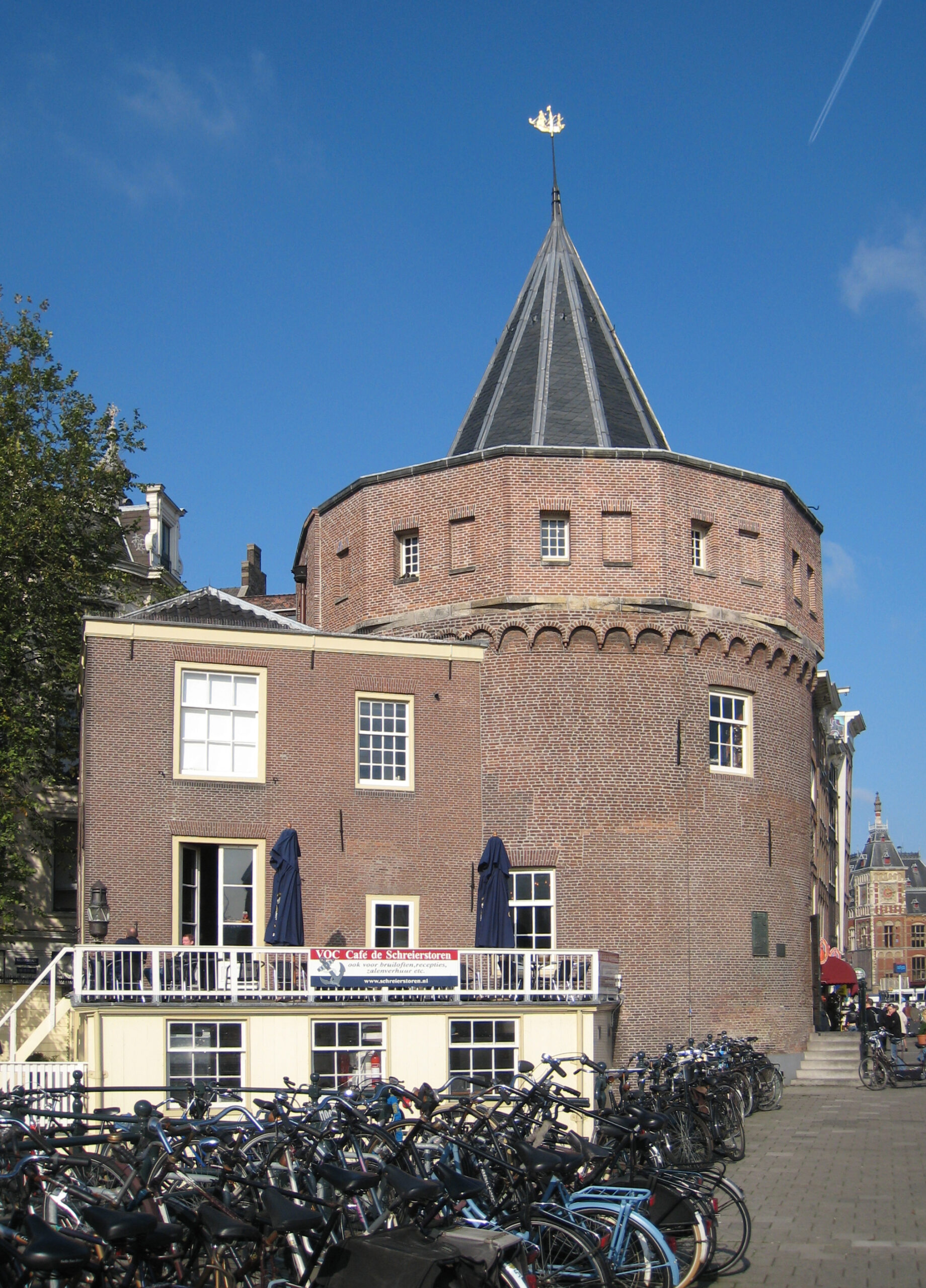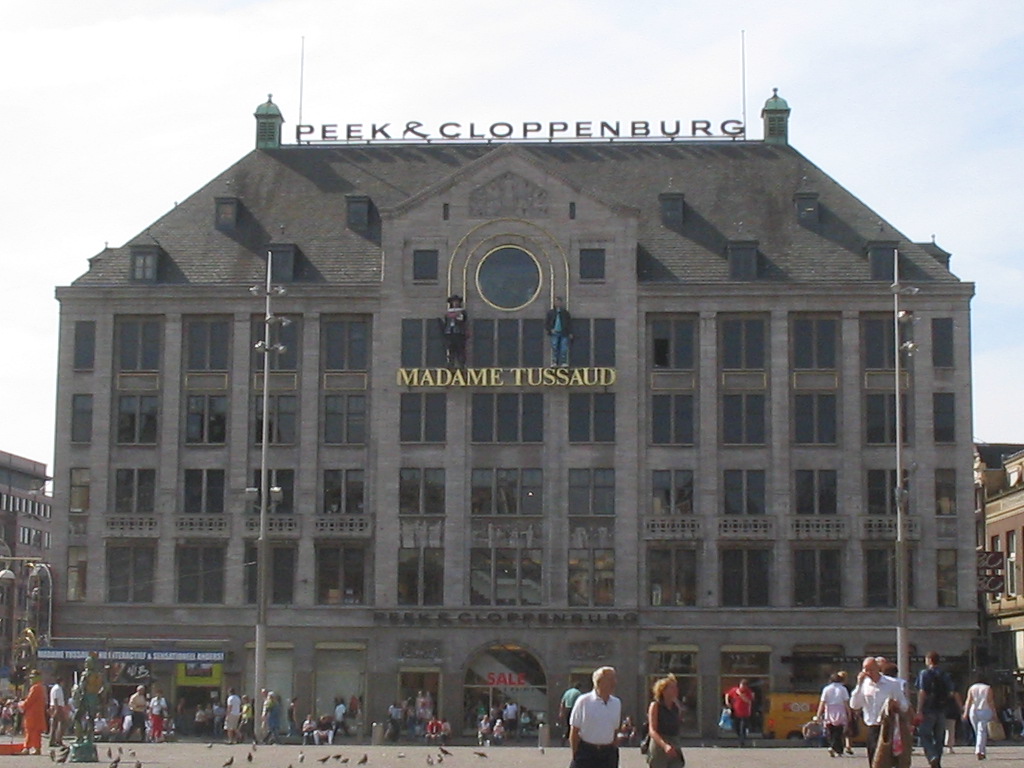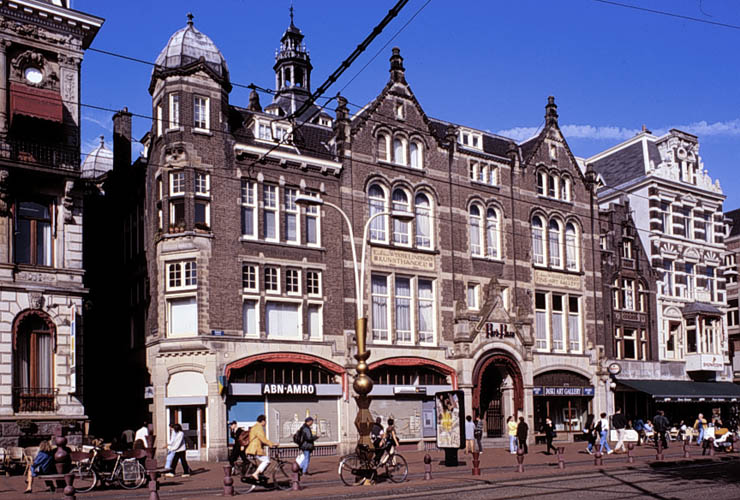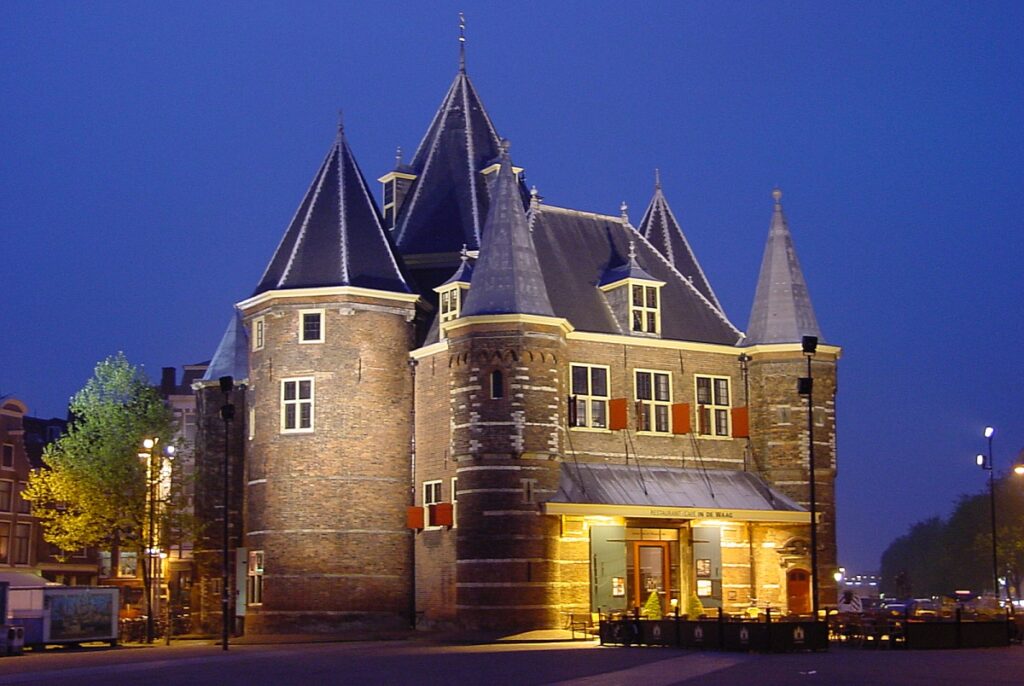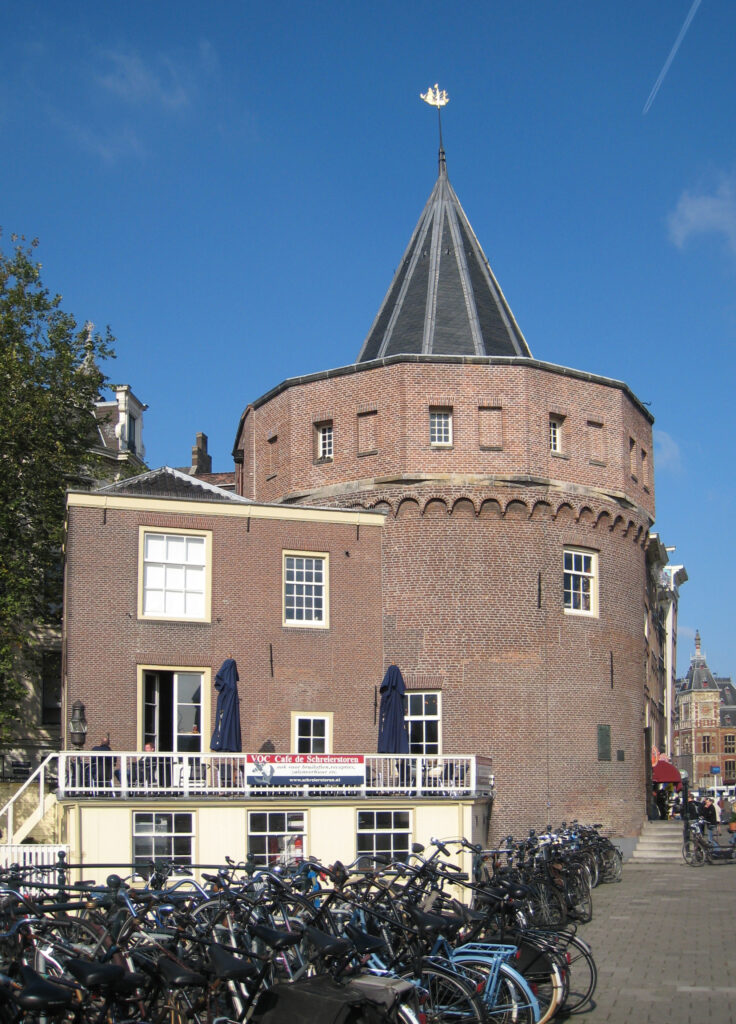
The Schreierstoren, or “Tower of Tears,” is a former defense tower located in Amsterdam, on the banks of the IJ canal in the Prins Hendrikkade district. Built in 1487, this tower is one of the few remaining vestiges of Amsterdam’s medieval fortification system. Today, it is listed in the national heritage register (Rijksmonumenten) and has become a symbol of the city’s maritime history, associated with poignant legends linked to sailors’ departures.
Galerie photos
History and origin
The Schreierstoren was originally a defense tower located at the corner of the city’s medieval fortifications. It stood at a strategic point between the eastern boundary of the city and the IJ, one of the main sea inlets crossing Amsterdam. Its original name, Schrayershoucktoren, referred to the sharp angle of the old fortifications, before it was changed to Schreierstoren, due to the dramatic farewells of sailors’ wives who often gathered there to say goodbye to their husbands before they set out to sea.
Transformation over time
Over the centuries, the tower lost its defensive role and was used for various administrative purposes. From 1875, it became the headquarters of the Port of Amsterdam administration, a function that was later moved to a more modern building in 1960. The Schreierstoren underwent a major restoration in 1983, which ensured its preservation and partial transformation into a commercial and cultural space. Today, a restaurant occupies the ground floor, while the upper floors house a bookstore specializing in maritime maps.
Legend and symbolism
The name “Tower of Tears” is directly linked to the popular legend of the women who came to weep over the departure of their husbands, sailors of the Dutch East India Company. This story was reinforced by a gable stone dating from 1569, depicting a woman in tears as a ship sails away on the horizon. This symbol of separation and sorrow made the tower an emblematic site of the city’s maritime history and a place filled with symbolism.
Henry Hudson and the commemorative plaque
On the northeast façade of the tower, a plaque was installed in 1927 to commemorate the achievement of Henry Hudson. On April 4, 1609, he departed from this very spot for his historic voyage to the New World, as part of a mission for the Dutch East India Company. This journey led Hudson to discover the mouth of the river that now bears his name, today a central feature of New York City. The plaque was installed at the initiative of the Greenwich Village Historical Society of New York to celebrate this landmark event.
